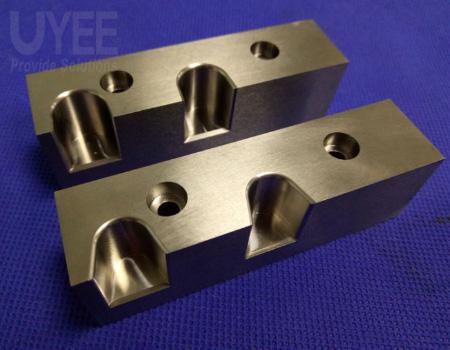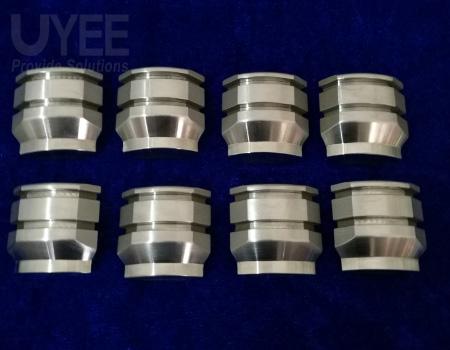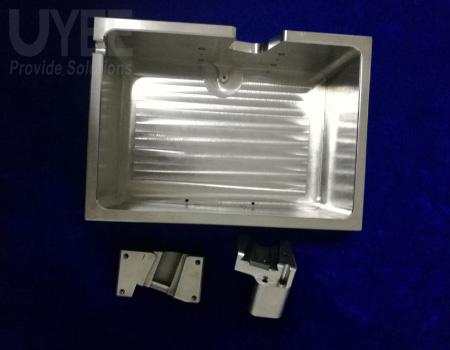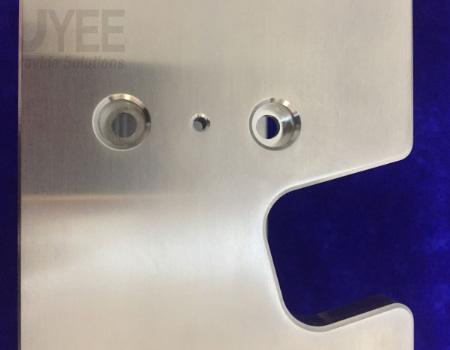Titanium CNC Machining & Titanium Machined Parts
Unique Properties of Titanium Alloy
Titanium was discovered in 1793 and put into industrial production in the early 1950s. At present, it has become the third metal material after iron and aluminum, and it is widely used in the aerospace, and medical field in industry .It has excellent mechanical properties, high strength, low elasticity, low density, and good in resistant high temperature and corrosion. It is the main consumer materials in the aerospace industry. However, due to its low thermal conductivity ,high temperature chemical activity and small modulus of elasticity ,titanium alloy is a typical difficult to machine material .During the titanium parts manufacturing process, it is easy to produce high cutting temperature, which leads to faster cutter tool wear and difficult to control surface quality, and low cutting speed makes it difficult to improve processing efficiency.
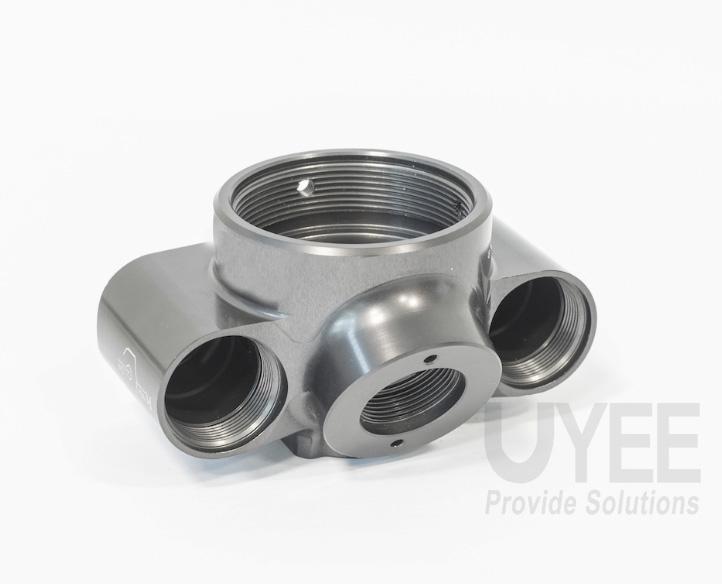
First of all, titanium is not even afraid of the most corrosive media because it is extremely resistant to corrosion. The metal is assisted by a thin protective oxide coating of TiO2. Even if the film is damaged, when there is oxygen, titanium will immediately restore the protective layer .The second feature of titanium alloys is low workability. The fact is that titanium machined parts do not conduct heat well, which is why the cutting tools are subjected to high thermal loads.
How Does CNC Titanium Machining Work ?
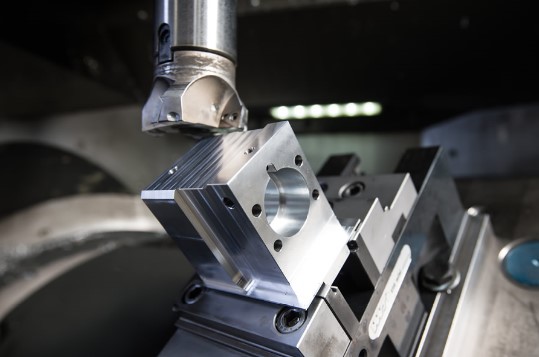 During the machining of titanium alloy, a carbide cutting tool is required .Titanium CNC Machining requires the use of harder alloy cutting tools, using a smaller front angle and a larger rear angle to increase the touching length between the machining and the front cutting tool area, and reduce the friction between the work piece and the rear cutting tool area .The cutting tool tip is round arc transition blades to improve strength, avoid sharp corner burnout and chipping. Cooling fluid needs to be added constantly to fully cool during manufacturing process. The cutting speeds and feed rates should be low, and the cutting depth can be large, so that the cutting tool tip works below the hardened layer, which is conducive to improving the durability of the cutting tool.
During the machining of titanium alloy, a carbide cutting tool is required .Titanium CNC Machining requires the use of harder alloy cutting tools, using a smaller front angle and a larger rear angle to increase the touching length between the machining and the front cutting tool area, and reduce the friction between the work piece and the rear cutting tool area .The cutting tool tip is round arc transition blades to improve strength, avoid sharp corner burnout and chipping. Cooling fluid needs to be added constantly to fully cool during manufacturing process. The cutting speeds and feed rates should be low, and the cutting depth can be large, so that the cutting tool tip works below the hardened layer, which is conducive to improving the durability of the cutting tool.
In addition, due to the high strength of titanium alloy, it must be machined at high speed, during which the temperature of the cutting area rises sharply. When the cutting speed is too high, a chemical reaction occurs between the chips and the cutting edge of the tool, which can cause chipping or even fracture. Therefore, it’s necessary to put forward higher requirements for cutting tools. In particular, the tool should be made of the most durable cemented carbide, which does not contain elements that react with titanium.
CNC Milling Titanium
In order to ensure the required quality of the finished product, all the characteristics of this metal must be considered .Let us take a closer look at the main characteristics of this type of material in order to choose suitable cutting tools and titanium parts manufacturing methods.
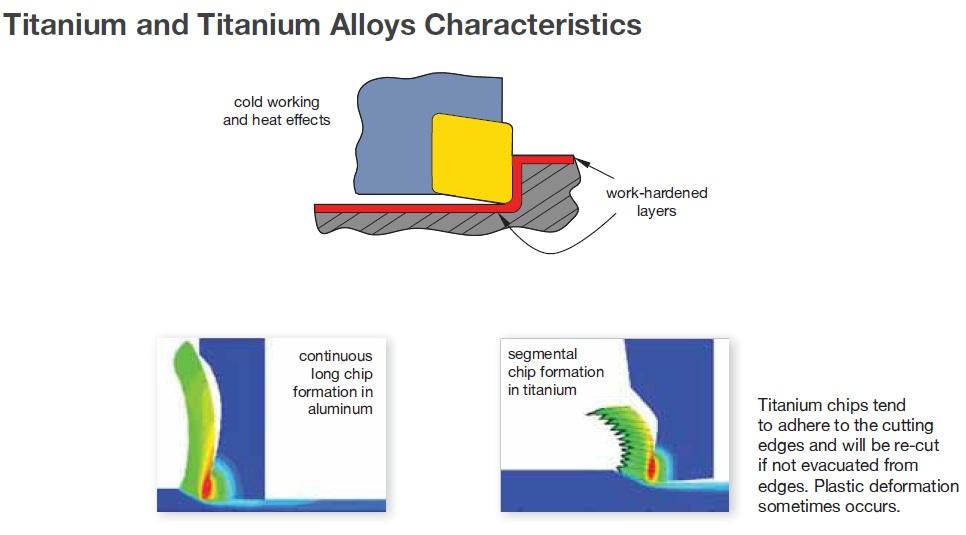
-
High Strength
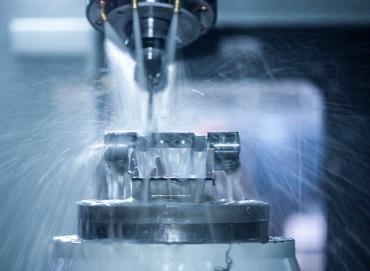 This property of titanium leads to high loads on the cutting tool. It is necessary to make great efforts to cut this metal. Here, you cannot do without high-quality wear-resistant tools. Cemented carbide is a better choice, although hardened steel tools are also a good choice.
This property of titanium leads to high loads on the cutting tool. It is necessary to make great efforts to cut this metal. Here, you cannot do without high-quality wear-resistant tools. Cemented carbide is a better choice, although hardened steel tools are also a good choice.
Due to the large force during milling titanium , the temperature in the cutting area will rise sharply. Considering that titanium has virtually no thermal conductivity, this will only aggravate the situation and cause further overheating.
Intense heating can cause tool deformation and also increase the possibility of forming defects on the surface of the work piece. The fact is that molten metal sticks to the cutting edge of the tool, thereby destroying processing quality and changing the geometry of the part.
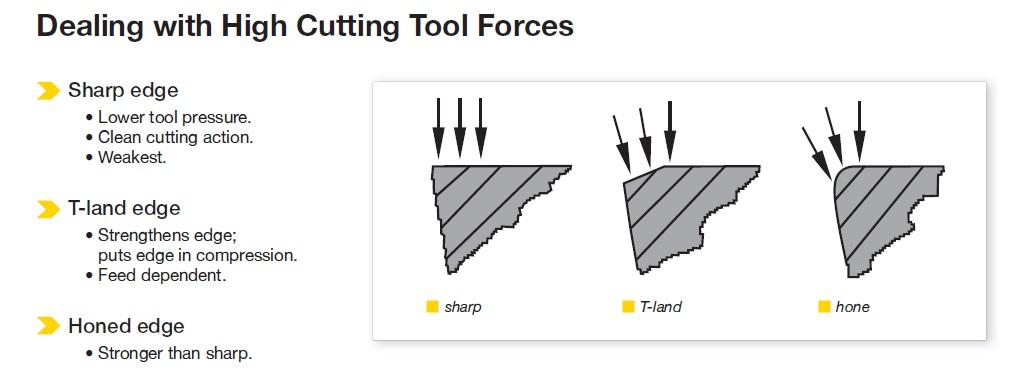
The temperature must be adjusted by reducing the processing speed and continuously applying cutting lubricant. In addition, the cutting tool itself has requirements. It should have a high Rockwell hardness and can work normally even under extreme heating conditions.
-
Strong Vibration
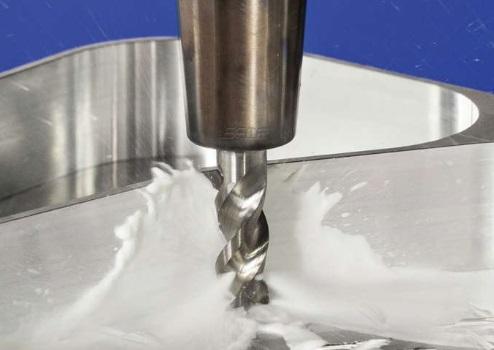 Due to the high strength, there is increased vibration during processing. This greatly shortens the life of the cutting tool, especially if the tool is made of cemented carbide. By strengthening the fixation of the parts to the machine, the problem can be minimized. It is best to place the work piece as close as possible to the spindle of the machine tool. Generally, machining is performed on equipment equipped with an ISO 50 taper spindle with a short overhang.
Due to the high strength, there is increased vibration during processing. This greatly shortens the life of the cutting tool, especially if the tool is made of cemented carbide. By strengthening the fixation of the parts to the machine, the problem can be minimized. It is best to place the work piece as close as possible to the spindle of the machine tool. Generally, machining is performed on equipment equipped with an ISO 50 taper spindle with a short overhang.
In addition, a typical characteristic of titanium alloys is their ability to oxidize when exposed to strong heat. Also, as mentioned above, during the milling process, the temperature reaches its limit. Maybe this leads to the fact that the,titanium work piece becomes unsuitable for further processing and use. Although the process of milling titanium alloys is very difficult and accompanied by a lot of labor costs, if you use high-quality cutting tools with the correct methods ,then, you can minimize it.
Titanium CNC Turning: Choosing Cutting Tools
The high strength of titanium and its alloys requires the use of special processing tools and special cutting techniques .First of all, titanium has increased strength and therefore needs to be processed at a low speed. The high friction that occurs when titanium machining leads to a significant increase in the temperature of the processing zone, which may reach 1000-1100°C.
The second distinguishing feature of titanium is toughness. Under extremely high heat, chips begin to adhere to the cutting edge of the tool, causing many problems. These include the formation of craters, grooves and ductile deformation of tool cutting edges .In order to reduce the hassle of using this tool and improve the processing quality, it is worth following the tips below:
- 1) For turning, please choose fine-grained carbide tools without coating or with PVD coating (spraying vacuum). This will allow you to apply a smaller cutting force and increase the processing speed.
- 2) Using cutting fluid (coolant) will help control the heat in the cutting area. In addition, it is desirable to perform under high pressure. This not only improves chip handling, but also increases turning speed by 20% and increases tool life by 1.5 times.
- 3) To reduce dimples and chisels, it is recommended to use tools with shallow chamfers or round blades. This will speed up the grinding speed while minimizing wear.
- 4) It is best to process smoothly and gradually cut into the work piece. Then, one part of the cutting edge will bear the cutting load, and the other part will bear the load for stable cutting.
- 5) The depth of turning should be 15-25% of the blade diameter. This can avoid vibrations, especially when there is still a strong hard skin on the work piece at the beginning.
- 6) Vibration can also be eliminated by a multi-stage work piece clamping system as close as possible to the spindle.
Areas of Expertise In Titanium Machining
UYEE has been serving some customers from critical fields, such as: aerospace, defense, and medical device manufacturing, so we are highly experienced at titanium part machining. With over 13 years of CNC titanium machining industry experience. UYEE has the advanced knowledge, fixtures and high speed CNC equipment to precision machine your titanium prototype and low volume production parts. All customers project will be handled at a competitive price and a commitment to total customer satisfaction.

